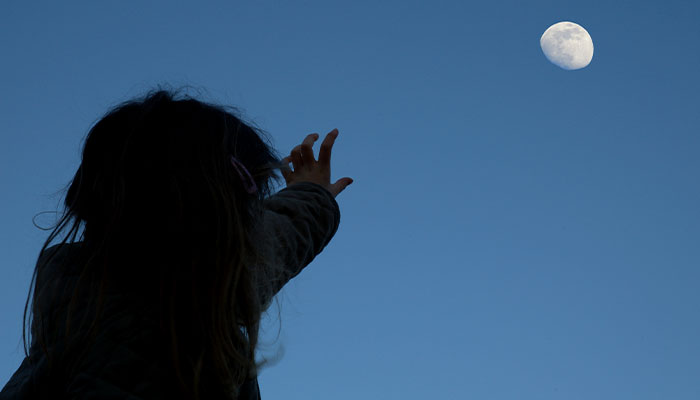While we believe that the books and resources recommended may be of value to you, keep in mind that these are suggestions only and you must do your own due diligence to determine whether the materials are appropriate and suitable for your use. PNC has no sponsorship or endorsement agreement with the authors or publishers of the materials listed.
OUR SKY

Moon Phases
Children will investigate how the Moon moves.

Lesson Objective
Children will explore and document Moon changes over a period of 1 week.
Science
What You'll Need
- Plain white paper – 1 sheet per child per day
- Pencils or crayons
- Chart paper
- Markers
What To Do
Note: Part of this activity needs to be done at home. This lesson involves the children drawing pictures to keep track of how the Moon looks each night for 1 week. The pictures will be compared at the end of 1 week to note the difference in the Moon.
- Divide a sheet of chart paper in half, and label the sides Night and Day.
- Discuss with the children things they see in the sky at night and during the day; chart their contributions.
- Tell the children that they will be learning about how the Moon changes over time.
- Show the children pictures of the Moon at different phases—full, half, quarter, and crescent.
- Explain to the children that they will be keeping a journal of the changing shape of the Moon for 1 week.
- Tell the children that each night, when they are at home, they will need to look up at the Moon and draw a picture of what it looks like. They will bring their pictures to school the next day.
- Explain to the children that they will compare their pictures after 1 week to see how the Moon changes.
- The next week, compare the pictures drawn on Day 1 to the pictures drawn on Day 2 and compare those drawn on Day 3 to those drawn on Day 5; then, compare the pictures drawn on Day 1 to those drawn on Day 5 (see Guiding Student Inquiry).
Resources
Home School Resources
Home educators: use these printable lesson PDFs to teach this lesson to your home schoolers. They're available in English and Spanish.
Content Provided By
Common Core State Standards Initiative – These lessons are aligned with the Common Core State Standards ("CCSS"). The CCSS provide a consistent, clear understanding of the concepts and skills children are expected to learn and guide teachers to provide their students with opportunities to gain these important skills and foundational knowledge [1]. Visit the CCSS



